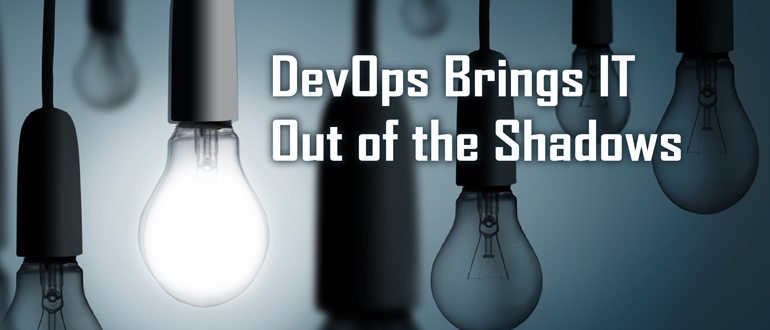There are a handful of users in any organization who don’t work in IT, but know enough to work around the system, circumvent policies, and get things done–sometimes risky things that put the organization at risk. With cloud services and personal mobile devices, this issue of “shadow IT” is a growing threat. Embracing DevOps can help organizations deliver the features and capabilities users need and thwart shadow IT at the same time.
One of the biggest threats to organizations today is shadow IT—unsanctioned and unknown technologies and applications being employed by maverick users. Shadow IT represents a security risk for your company—the IT department can’t defend and protect technologies and assets it doesn’t know about—and should be eliminated. One of the best defenses against shadow IT is DevOps.
When I worked in the trenches as a one-man IT department—part network admin, part tech support—there always were one or two individuals who knew enough to be dangerous. As frustrating as it was to deal with completely clueless users who didn’t know the difference between the computer and the monitor and weren’t even really sure where the power button was, those who knew enough to go rogue and reconfigure their devices or introduce new applications and services were a more existential problem for the organization. In today’s era of BYOD and cloud services, shadow IT is a scourge significantly greater than what I faced.
Don’t get me wrong—I’ve also been on the other side of that equation and I understand the motivation that drives shadow IT. Users just want to get their jobs done, and the people in the trenches know better than anyone what the hurdles are and how to fix them. Requesting new technologies or capabilities from IT is a cumbersome and tedious process at many organizations, so in the name of expediency users just do what they need to do on their own.
DevOps can help solve the shadow IT problem in a better and more sustainable way, though. There are two benefits that DevOps brings to the table that minimize the potential for shadow IT: More rapid development and empowering individuals.
First, an IT organization that has embraced DevOps will be quicker to respond to requests from users. Replacing the traditional software development life cycle with a more agile and continuous pace of development means that feature requests can be incorporated much faster.
Second, one of the cornerstones of DevOps is the underlying culture—the breaking down of silos and removal of barriers and bureaucratic nonsense that get in the way of efficient progress. Essentially, those rogue technologies and applications that comprise shadow IT in other organizations are simply a part of the larger DevOps whole in an organization that has embraced DevOps. There is even a term ascribed to users outside of traditional IT/developer roles who develop solutions: “citizen developers.”
See the full story on DevOps.com: DevOps Brings IT Out of the Shadows.
- Tackling Swivel Chair Syndrome - November 14, 2024
- Unlocking Proactive Compliance with Adobe’s Common Controls Framework - October 14, 2024
- Unlocking the Power of Continuous Threat Exposure Management - October 8, 2024



